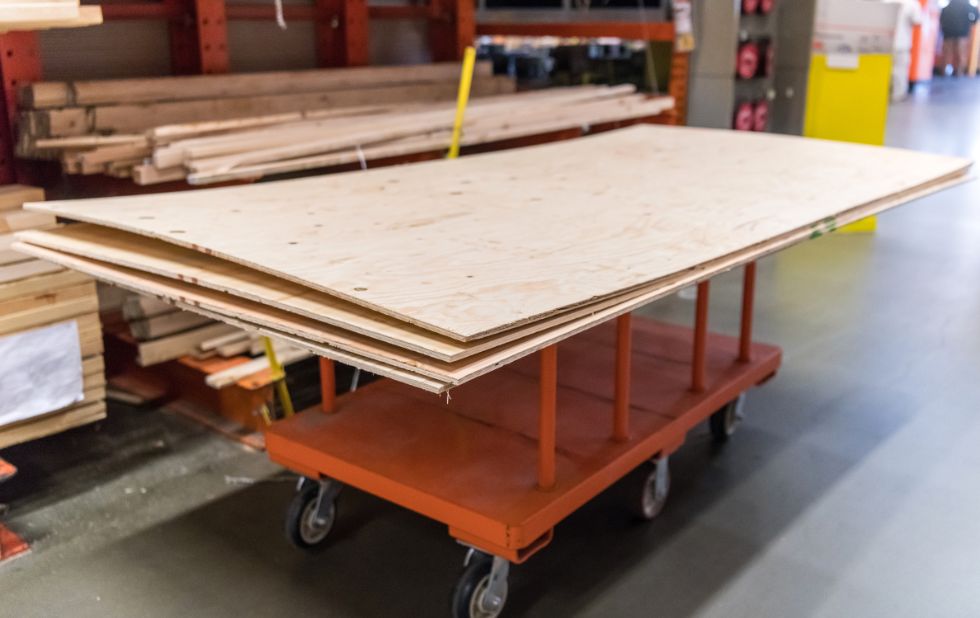Introduction
Selecting the appropriate wall sheathing material is a crucial decision in the construction or renovation process. The choice you make will impact the structural integrity, insulation, and overall performance of your building. In this guide, we will compare and contrast four popular wall sheathing materials—plywood, oriented strand board (OSB), fiberboard, and cement board—considering factors such as climate, budget, strength, and ease of installation.
Plywood
Plywood has long been a staple in construction due to its versatility and strength. Composed of layers of wood veneers glued together at right angles, plywood offers excellent stability and resistance to moisture when properly sealed. Its natural wood aesthetics make it a popular choice for both interior and exterior applications.
Strength:
Plywood excels in strength, providing a solid and durable surface for walls. It has a high load-bearing capacity, making it suitable for various construction projects.
Climate:
While plywood performs well in varying climates, it is essential to apply proper moisture protection. In humid or wet conditions, using exterior-grade plywood and applying a weather-resistant barrier is crucial to prevent moisture-related issues.
Budget:
Plywood tends to be costlier than some alternatives, but its durability and performance often justify the investment. Consider the project’s budget constraints and weigh the long-term benefits of plywood against its upfront cost.
Ease of Installation:
Plywood is relatively easy to install, especially when compared to some other materials. Its consistent thickness and smooth surface make it user-friendly for contractors and DIY enthusiasts alike.
Oriented Strand Board (OSB)
OSB has gained popularity as a cost-effective alternative to plywood. It is composed of strands of wood arranged in layers and bonded with adhesive. OSB is known for its uniformity and structural strength.
Strength:
OSB is structurally robust and exhibits excellent load-bearing capabilities. It performs well in various applications, making it suitable for both residential and commercial construction projects.
Climate:
While OSB is susceptible to moisture absorption, advancements in manufacturing have produced moisture-resistant varieties. In humid climates, it is essential to use OSB with appropriate waterproofing measures, such as a water-resistant barrier.
Budget:
OSB is often more budget-friendly than plywood, making it an attractive option for projects with financial constraints. However, it’s crucial to balance cost savings with the specific needs of the project.
Ease of Installation:
Installing OSB is generally straightforward, and its consistent thickness allows for predictable and efficient construction. However, care must be taken to seal edges and seams properly to prevent moisture infiltration.
Fiberboard
Fiberboard, commonly made from compressed wood fibers, is an eco-friendly option that provides insulation and soundproofing benefits. It comes in various types, including medium-density fiberboard (MDF) and hardboard.
Strength:
While fiberboard may not match the structural strength of plywood or OSB, it offers sufficient strength for interior applications. It excels in providing a smooth and stable surface for finishing materials.
Climate:
Fiberboard is sensitive to moisture and should be used cautiously in wet or humid climates. It is best suited for interior applications where exposure to moisture is limited.
Budget:
Fiberboard is often more budget-friendly than plywood but may be pricier than OSB. Its affordability makes it an attractive choice for projects prioritizing cost savings.
Ease of Installation:
Fiberboard is lightweight and easy to cut, making it convenient for installation. However, attention should be given to moisture management, and proper sealing is essential to prevent swelling or warping.
Cement Board
Cement board, composed of cement and reinforcing fibers, is a durable and fire-resistant option suitable for both interior and exterior applications. It is often used as a base for tile and stone installations.
Strength:
Cement board is exceptionally strong and provides a sturdy substrate for various finishes. Its resistance to water damage and mold makes it an ideal choice for areas prone to moisture.
Climate:
Cement board performs well in humid conditions, and its resistance to moisture makes it suitable for wet areas like bathrooms and kitchens. It is an excellent choice for exterior applications as well.
Budget:
Cement board is typically more expensive than plywood and OSB. While the initial cost may be higher, the long-term benefits, such as resistance to moisture and fire, can outweigh the upfront investment.
Ease of Installation:
Installing cement board requires specialized tools and techniques, and it is heavier than some other options. While it may be more challenging to work with, the durability and performance it provides can make the installation process worthwhile.
Conclusion
Choosing the right wall sheathing material involves careful consideration of factors such as strength, climate, budget, and ease of installation. Each material—plywood, OSB, fiberboard, and cement board—offers unique advantages and considerations. Assessing the specific requirements of your project and weighing the pros and cons of each option will help you make an informed decision, ensuring a durable and well-performing building envelope.
Are you in need of top-notch commercial sheathing services? Please contact RRS Enterprises LLC as your go-to solution for all your sheathing needs. Our experienced and skilled contractors are committed to delivering high-quality workmanship that exceeds your expectations. Enhance the durability and integrity of your commercial structures with us. Your satisfaction is our priority as one of the best commercial sheathing contractors!


